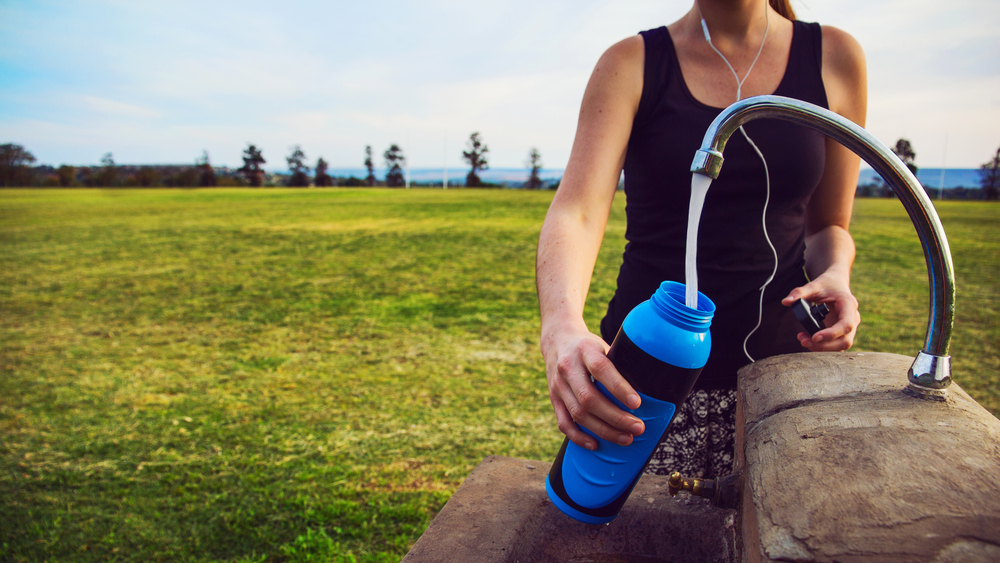No one’s bank account ever has as many digits as they’d like to see, but the savings accounts of college students can be particularly bleak. Besides the fact that college students may be paying out of pocket for tuition and housing, they generally don’t work full-time, or even half-time, jobs. Those lucky enough to score an on-campus job or qualify for work-study may only work 10 hours a week, and for students with a full class load, finding the time to squeeze in extra work hours off campus can be next to impossible. These tips will help you maximize your savings while you’re in school.

Fer Gregory / Shutterstock.com
Keep your change. Few people carry much cash anymore, and even fewer people like to carry around a pocketful of heavy change, but if you use cash even once a month, invest in a piggy bank of sorts. When you get home from whatever caused you to spend money, immediately unload your coins into a bag, drawer, mason jar, or whatever receptacle you choose. After a while, the number of coins you have in your stash will build up. Then, instead of taking them to a machine that will count them for you (and take a percentage), ask your bank for coin rolls and roll them up yourself. Pennies can be rolled in increments of 50¢, nickels in increments of $2, dimes in increments of $5, and quarters in increments of $10. It may take a while, but if you weren’t using the money anyway, it’s a nice surprise when you finally have enough to turn in at the bank.
Skip the bus and take a walk. If you live in a walkable area, there’s no need for you to drive your own car or take public transit unless it’s raining or you’re on a time crunch. Plus, walking is a perfectly acceptable form of exercise, so you might as well kill two birds with one stone. Other options are biking, carpooling, and, of course, using any form of public transit (which may be discounted or free to students with a valid ID card). Your pricier options are going to be hailing a ride from a cab, Lyft, or Uber or driving your own car, especially if you’re going to have to pay for parking.

M. Primakov / Shutterstock.com
Use your student ID card. This will work anywhere from movie theaters to public bus systems, because it’s pretty well known that high school and college students don’t have much expendable income. You can even flash your student ID if you go on vacation with your family and want to visit, say, an aquarium; most attractions offer student discounts! Some student IDs have expiration dates on them, but hang onto yours at least until the end of the summer after graduation. Rack up those savings while you can! If you’re in the military and have a military ID, you can save even more by showing that one instead of a student ID; some companies (Verizon, Lowe’s, and Sur La Table, for example) offer a flat discount on purchases.
Send your transcripts to your car insurance agency. There are a lot of ways to get discounts on your car insurance, but the exact requirements and necessary documentation are going to vary between insurance companies. You may be able to get a safe driver’s discount if you took a driver’s education class, a discount for bundling your renter’s and car insurance policies, or a “good student” discount if your report card shows all As and Bs. You could also look into any discounts that may be offered if you pay the full amount of your bill upfront instead of paying it monthly. Not all companies participate in such savings offers, but it’s certainly worth asking.
Download the Acorns app. The Acorns app automatically invests your spare change. You link your checking account (debit card) to the app, and each time you make a purchase, it rounds the change up to the nearest dollar and invests it. While it’s a mindless way to start investing and perfect for college students, there are more tax-advantageous options for investing out there once you start a career and increase your income. As a student with a valid .edu email address, you won’t have to pay anything for the first four years you use the app. Afterward, it’ll cost $1.00 each month, provided your account has less than $5,000.00 in it.
Download the ibotta app. The ibotta app gives you rebates (anywhere from 25¢ to a few dollars) for buying products that you would normally buy. Say, for instance, you go grocery shopping at Kroger and buy milk, carrots, and granola bars. You can search through the app for those three things, scan the barcodes, upload a photo of your receipt, and then get money deposited into your ibotta account within a day or two. The great news? Ibotta isn’t just for groceries. If you shop at pharmacies, clothing stores, or restaurants, you may be able to get rebates on your purchases there too. Once you have earned enough money in rebates to cash out, you can choose to be paid via Venmo, PayPal, or a store gift card.
Get a grocery store loyalty card. Almost all grocery stores offer discounts to their “preferred” customers and there isn’t a rigorous application process to become one. Most of the time, a cashier can set you up with a store card by knowing only your phone number and address. It’s free to join, and you’ll receive discounts on all sorts of everyday items. Might as well sign up for loyalty programs at all your local grocery stores!
Clean out your closets. It’s almost a guarantee that you have old clothes, shoes, games, books, and more just lying around the house and gathering dust. Instead of leaving them there, consider reselling your gently used items. You can do this on Ebay, Facebook Marketplace, Craigslist, thredup, or letgo or by having an old-fashioned yard sale. Your school may also have a specific platform where you can list for-sale items. Everything that’s leftover you can give to Goodwill. Get a receipt; donations are tax-deductible.

vwPix / Shutterstock.com
Drink tap water. Buying bottled water is often unnecessary unless you live in an area where the municipal supply of water has been declared unsafe to drink (in which case, buy a lot). Some bottled water is actually just tap water that’s been packaged nicely and subjected to a massive price increase. Save yourself the dollars; invest in a reusable water bottle (and a filter if you’re worried) and fill it up straight from the sink. Why would you pay more for a gallon of water than you do for a gallon of gasoline?
Set up recurring transfers into your savings account. If you have any sort of income, make a budget. Figure out how much you’re spending each month on essentials (food, housing, school, transportation, etc.) and then subtract that from your monthly income. What you have leftover is money that should be divided between “fun” things (movies, date night, going out to eat) and your savings account. If you know that you’re going to have $100 leftover at the end of each month, set up a recurring transfer from your checking account to your savings account. Once it’s started, you won’t have to think about it again, and you’ll passively save money for your future. Use one of these money management apps if you’re not sure how to budget!
While none of these tips are going to make you the big bucks, they could be helpful as you slowly grow your savings account or investment portfolio over time. And really, anything that gets you money that you wouldn’t have had otherwise is a step up from where you were. What do you have to lose?
-
Budgeting Tips for Recent Graduates
-
Successfully Apartment Hunting Using Craigslist: It’s Possible
-
What to Do If Your Debit or Credit Card Is Compromised
-
How to Pinch Pennies and Save Money While in School
-
Slow and Steady Ways to Build Up Your Savings Account
-
Four Ways to Cure Medical Student Loan Debt
-
Easy Ways to Save Money and Lengthen the Life of Your Car
-
What It’s Going to Cost You to Move into Your First Apartment
-
When and How You Should Start Saving for Retirement
-
Banking Essentials to Learn Before College
-
My College Story: Budget Traveling and Programs Abroad
-
How to Afford College When the FAFSA Doesn’t Foot the Bill

